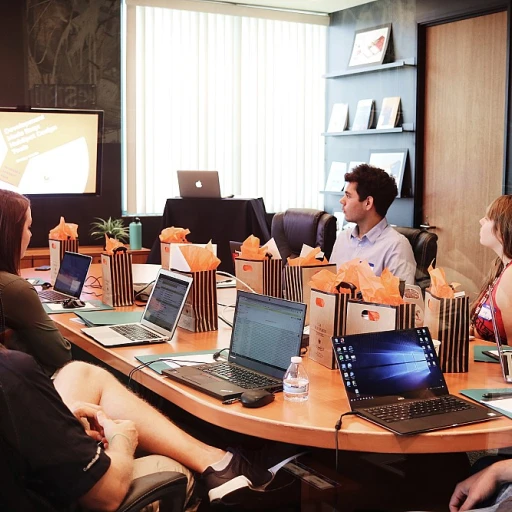
Understanding the Workforce Integration Manager Role
Understanding the Crucial Responsibilities of a WIM
The role of a Workforce Integration Manager (WIM) is pivotal within the realm of Human Resources, linking a range of complexities within workforce management systems. The primary aim is to ensure a seamless alignment between data processing and labor management functions. This role has gained significant relevance with the integration of systems like Kronos, UKG Pro, and other workforce interfaces.
A WIM is responsible for overseeing the successful management of workforce and payroll data through systems such as Kronos Workforce and Wfc. The manager must be adept at handling real-time data integration to ensure fluency in payroll and labor management systems. This involves leveraging interfaces and data integration services to synchronize employee data across various platforms.
Within an organization, the integration manager is tasked with bridging the gap between disparate workforce systems. The objective is not only to ensure smooth data flow but also to facilitate the development of solutions tailored to the company’s specific labor needs. This often involves collaborating with WIM consultants and interface designers to devise effective integration strategies.
In addition to technical expertise, effective workforce integration demands a strategic approach. The integration manager must align with the organization’s long-term goals, implementing systems that enhance productivity and minimize labor inefficiencies.
A comprehensive understanding of integration management can significantly impact employee satisfaction. Therefore, it requires a careful balance of technology, management skills, and strategic insights to execute successful workforce integration.
For a deeper dive into enhancing HR communication outreach through effective workforce integration, consider enhancing HR communication.
Key Skills for Effective Workforce Integration
Indispensable Competencies for Workforce Integration Managers
Steering the ship of workforce integration requires a robust skill set. As a Integration Manager, being adept at merging diverse workforce systems like Kronos, UKG Pro, and other components into a unified structure is crucial. Competence in management systems, data processing, and overseeing real-time data integration forms the foundation for effective leadership in this role.
Technical Acumen
Technical expertise in interface design and systems integration is vital, including knowledge of Kronos Workforce and UKG systems. Being well-versed in data management solutions ensures smooth labor data processing and seamless time data capture through wfc and payroll systems. Additionally, understanding the intricacies of third-party platform interfaces reinforces the manager's capability to provide effective integration services.
Teamwork and Leadership
A successful Workforce Integration Manager must possess strong leadership skills to guide their team effectively. Fostering collaboration among wim consultants, IT specialists, and HR professionals is essential to ensure successful data integration and organization-wide implementation of initiatives. Developing a collaborative environment helps navigate the complex world of workforce data management and integration.
Problem-solving and Adaptability
Without a doubt, problem-solving capabilities and adaptability are indispensable when unexpected challenges arise. These competencies enable the manager to address issues related to workforce data swiftly and ensure continuous operation of the integration system. Moreover, embracing technological advancements and continuously upskilling will facilitate the manager's adaptability to ever-evolving workforce management paradigms.
For those seeking more insights into how intranet systems can enhance communication and efficiency within HR frameworks, refer to this comprehensive resource: how intranet systems enhance internal communication in HR.
Challenges in Workforce Integration and Communication
Addressing Obstacles in Workforce Integration and Effective Communication
Navigating the complexities of workforce integration and communication is no small feat. Integration managers are often faced with the dilemma of optimizing various systems like workforce management solutions, payroll, and labor data interfaces, such as Kronos or UKG Pro. One of the main challenges is ensuring seamless data synchronization across these platforms while maintaining real-time accuracy. Managing disparate systems can complicate efforts to streamline data processing and integration services. Several obstacles require careful consideration:- Data Incompatibility: Integration managers must ensure that data from different sources, such as employee records and time data, is compatible for seamless processing. This often involves using a sophisticated interface designer to manage workforce data effectively.
- Real-Time Integration Issues: Real-time data integration is essential for timely decision making. However, technical bottlenecks in Kronos WIM or UKG systems can lead to delays, impacting labor management and payroll accuracy.
- Communication Breakdowns: Effective communication across departments can be hindered by inadequate integration of management systems. WIM consultants play a critical role in facilitating concise data communication within the organization.
The Impact of Technology on Workforce Integration
The Influence of Modern Tools on Workforce Coordination
The rapid advancement of technology has undeniably transformed the landscape of workforce integration. With systems such as Kronos Workforce and UKG Pro, integration managers now have tools that streamline data processing and management across various platforms. One of the critical elements here is ensuring seamless data integration from multiple sources, including payroll systems, time tracking devices, and third-party apps. Incorporating these technology-driven solutions into the organization’s ecosystem allows for real-time data processing, which is essential for effective workforce management. An integration manager utilizes these systems to facilitate labor data interfacing and analysis. This interface designer role becomes vital in handling the complex interactions between systems, allowing a smooth exchange of workforce data across different platforms. With the introduction of workforce integration management software, organizations can address timing issues related to employee data, ensuring timely labor deployment. Consequently, systems like Kronos WIM and UKG deliver accurate, comprehensive data that supports workforce development and strategic planning. However, integrating these systems poses challenges. For instance, labor data synchronization and aligning different workforce management solutions can become daunting without the right expertise. This is where WIM consultants step in, providing guidance and support to interface systems efficiently. Ultimately, leveraging such technology not only facilitates robust workforce integration but also enhances communication within teams. Integration managers, therefore, play a pivotal role in adapting technological advancements to improve organizational processes and interfaces.Best Practices for Successful Workforce Integration
Harnessing Effective Strategies for Integration Success
In the ever-evolving landscape of human resources communication, the importance of implementing best practices in workforce integration cannot be overstated. A workforce integration manager (WIM) plays a pivotal role in aligning diverse elements such as employees, payroll, and systems to create a seamless operation within an organization. However, it is crucial for a manager to adopt effective strategies to ensure success. To begin with, fostering clear communication between the workforce management system, such as Kronos Workforce Central (WFC), and other departmental systems is fundamental. Ensuring real-time access to labor data, along with streamlined data processing, enhances operational efficiency. The integration manager must intricately navigate the interface between various systems, such as UKG Pro and Kronos WIM, to allow for smooth data integration. Creating an environment that encourages collaboration among different departments is another best practice. A WIM can leverage their skills in interface design to craft solutions that encapsulate the needs of all stakeholders. By doing so, they can facilitate a collaborative approach to integration, where insights from departments such as payroll, employee management, and development are synthesized to deliver robust solutions. Additionally, the engagement of third-party consultants, such as WIM consultants, provides an external perspective that can prove invaluable. These consultants can offer expert advice on how to maneuver complex integration scenarios and suggest customizable solutions tailored to the unique needs of the organization. Moreover, regular assessments and audits of the integration process are essential to maintaining system efficiency and effectiveness. By consistently reviewing labor data and performance metrics, organizations can identify areas that require improvement and implement timely corrective measures. Lastly, investing in ongoing training and development for all stakeholders involved in the integration process is crucial. A well-informed workforce is key to minimizing resistance to change and ensuring a smooth transition. When employees understand the benefits of an integrated system and feel confident in their abilities to navigate it, the chances of successful integration are significantly heightened. By adopting these best practices, organizations can significantly impact their workforce integration initiatives, paving the way for a more unified and productive work environment. The role of workforce management, WIM, and system integration must evolve in tandem with technological advancements to continue meeting the dynamic needs of the workforce.Case Studies: Successful Workforce Integration
Lessons from Successful Workforce Integration Case Studies
Real-life case studies provide valuable insights into the effectiveness and challenges of workforce integration. Understanding how different organizations have approached the role of the Workforce Integration Manager can offer practical lessons:- Optimizing Kronos with Effective Employee Engagement: An organization successfully implemented a Kronos workforce management system by integrating a comprehensive employee communication channel. This approach ensured all employees were on the same page regarding time data accuracy and payroll systems. The integration of Kronos WIM helped in seamless data processing and management, leading to improved labor data utilization.
- Streamlined Interface Design for Enhanced Data Integration: A complex organization utilized a tailored interface designer to effectively bridge disparate systems, including workforce data and third-party applications. Integration services were crucial in real-time data synchronization, enabling management to make timely decisions based on up-to-date labor data.
- Leveraging UKG Pro for Robust Workforce Management: By harnessing the capabilities of UKG Pro, a firm addressed challenges in workforce integration. This platform enabled a cohesive system interface, facilitating improved time management and ensuring streamlined WIM services that accommodated organizational needs efficiently.
- Collaboration with WIM Consultants for Strategic Growth: A corporation partnered with WIM consultants to enhance their workforce management strategies. The consultants provided insight into best practices that aligned with the company’s goals, resulting in optimized workforce integration that supported the organization’s developmental objectives.












